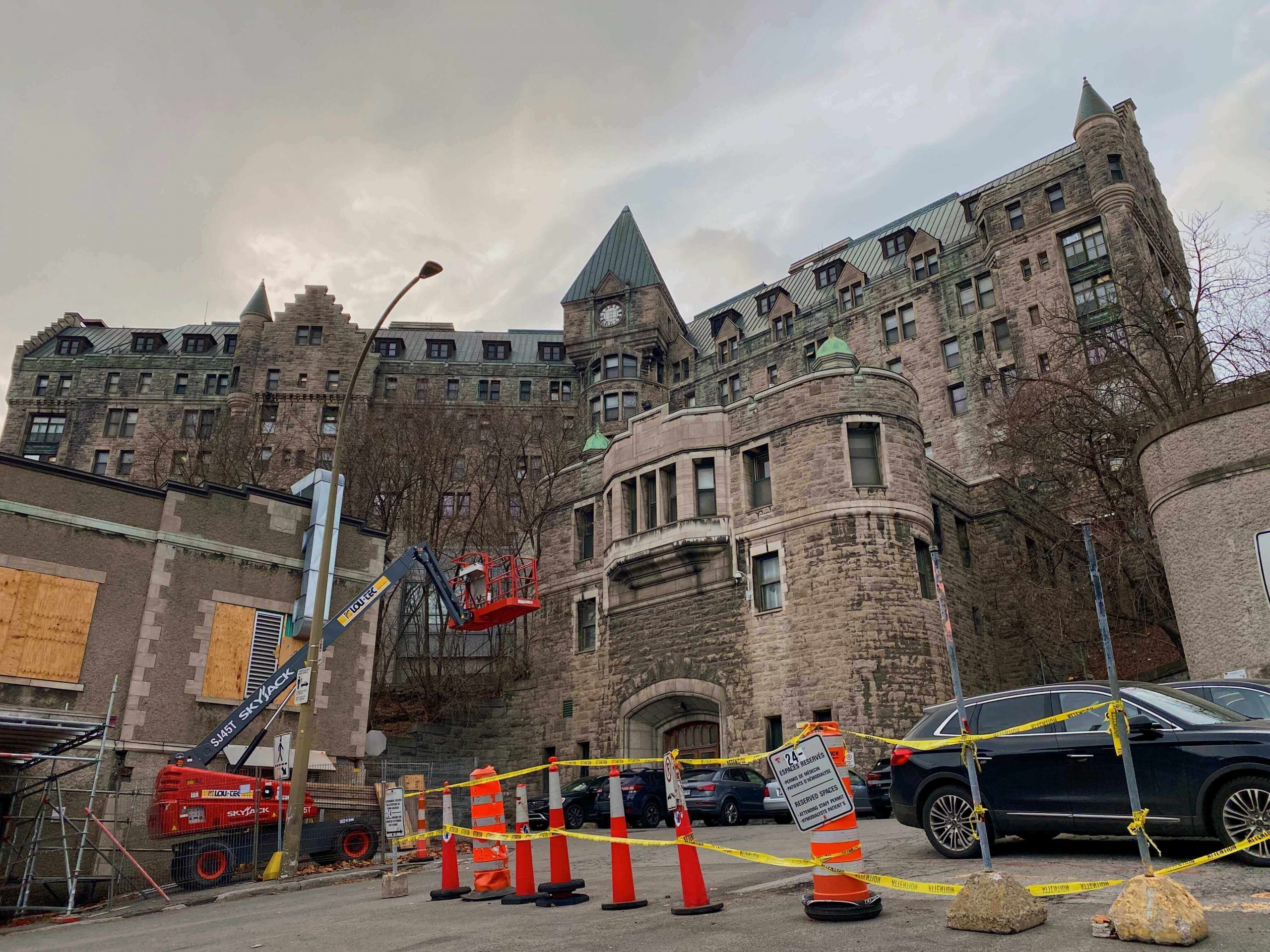Leaders of McGill’s New Vic Project held a town hall on Aug. 31 to review proposed renovations to the Royal Victoria Hospital site and to answer questions from students and faculty. Among those present were the executive sponsors of the project, provost Christopher Manfredi and vice-principal (Administration and Finance) Yves Beauchamp. Bruce Lennox, dean of the Faculty of Science and academic lead of the New Vic project, and Pierre Major, executive director and project lead, co-presented on the history and vision of the project, both architectural and conceptual.
Manfredi provided opening remarks, explaining the overarching concept for the Royal Victoria Hospital site, emphasizing a focus on interdisciplinary dialogue and themes of sustainability and public policy.
“What we wanted to do was to bring together […] a critical mass of the university’s best minds, both researchers and students, that were dedicated to addressing the defining challenges of our future,” Manfredi said. “We wanted to free them from disciplinary and even physical boundaries, and directly connect them to the expertise required to translate their knowledge into innovative solutions and policy action.”
The proposed 700-million-dollar construction took six years to plan. Now that the state-of-the-art facility is mapped out, in line with strict guidelines from the Société québécoise des infrastructure (SQI), the project is working its way through the approval process. It gained approval from the Quebec Government’s Cabinet in May 2021 and from Montreal’s City Council in June 2021, but now it must undergo public consultation, starting Sept. 8.
The implementation of the project’s plans has been an extensive process, in part because the Royal Victoria Hospital site, which rests on the side of Mount Royal, was publicly owned until 2015 when the Quebec government ceded 15 per cent of it to McGill. Critics of the project, including prominent Montreal organizations like Les amis de la montagne, argue that private ownership of the public landmark is not in the best interest of the community.
Lennox claimed that the New Vic Project’s vision maintains the integrity of the historic site and respects its importance to the public at large while simultaneously enhancing its functionality.
“The buildings, as [reenvisioned], especially with the new build, really are complementary [and] are in harmony with the mountain,” Lennox said. “In many ways the project is returning the mountain to Montreal and to Montrealers [….] The architects […] and the entire project team have worked very hard, very thoughtfully, at how to restore this relationship to the mountain. This is critical for the acceptance of the project with the Montreal community.”
Major also highlighted the project’s goal of maintaining the integrity of the site during his segment of the presentation.
“The heritage aspect of the site is something that requires a great deal of thought and work,” Major said. “The heritage building represents about 30 per cent of the […] future built space and […] 70 per cent is new construction that has been nicely tucked away behind the heritage building, very respectfully.”
Further criticism of the project stems from uncertainty over what will happen to the unhoused people who were temporarily given shelter in the Royal Victoria Hospital during the COVID-19 pandemic. Major addressed this briefly, stating that the SQI, not McGill, is responsible for determining the relocation of these individuals.
“[SQI] is developing a site master plan [where they will] set the parameters for future development [and use of the site],” Major said. “If you look in the urban plan of the city of Montreal there [are] no bylaws that define or orient any future development.”
The Office de consultation publique de Montréal’s (OCPM) public consultation is set to begin on Sept. 8 and will last until November. The Royal Vic Coalition, which describes itself as a “Montreal-wide coalition that advocates for the Royal Victoria former hospital to remain devoted to the common good,” is circulating a questionnaire which encourages individuals to speak up against privatization during the consultation.
The leaders of the project expect a report from the OCPM by Spring 2022, and the next step is to begin work on the site itself.
“[W]e are on the verge of undertaking the statutory public consultation process [with the OCPM],” Major said. “If all goes well, and it will, we will start work on the site in 2022 and we will move in in 2028.”








